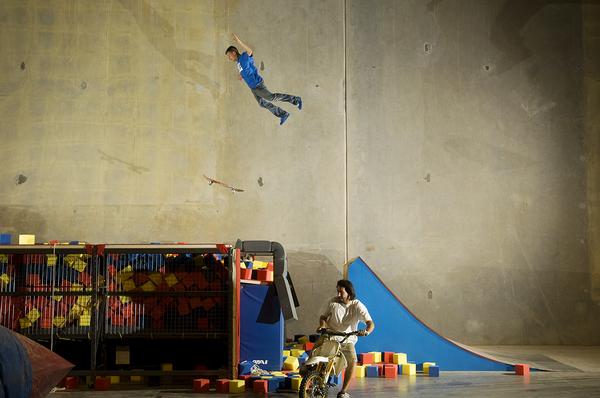
Contact Me
Most Recent Blog Posts
05/16/2024
ChatGPT and the Educational Pump Fake
05/25/2023
On Failure...
05/16/2023
An Ode to the GOAT (of Failure)
02/12/2021
Failure Judo: Take Time to Recover
07/31/2020
Failure Judo: Build Community
07/30/2020
Failure Judo: Discuss
07/29/2020
Failure Judo: Be Meta
07/28/2020
Failure Judo: Tinker
07/27/2020
Failure Judo: Practice
07/26/2020
Failure Judo: Reframe the Experience
07/25/2020
Failure Judo: Manage Loss
07/24/2020
Failure Judo: Take Incremental Steps
07/23/2020
Failure Judo: Fail on Furpose
07/22/2020
Failure Judo: Visualize Failure
07/21/2020
Failure Judo: 11 Tools to Make Failure Work for You.
07/20/2020
Perseverance Isn’t Enough.
02/05/2020
Why You Should Try New Things
01/09/2020
Piaget and Failure…
01/04/2020
The Value of Struggle
01/02/2020
The Fear of Failure
11/16/2019
Why Failure Beats Practice Alone
11/14/2019
Reclaiming Failure Tactic: Visualization
11/05/2019
Legos, the Process, and Failure
10/30/2019
Fail First, Succeed Later
10/25/2019
Failure... Like Riding a Bike
10/24/2019
Michael Jordan: Faiure
10/23/2019
Pole Vaulting - A Journey of Failure
10/18/2019
Why Failure Beats Practice Alone
11/14/2019
Failure in a real thing is better than just practicing that thing, if it is possible. Clearly, there are scenarios where practice is a better call, or even the only thing possible. Astronauts may rehearse a spacewalk, because they know that when it comes to failure in the real thing, the negative implications of failure are too great, and they might not be able to control the situation to give themselves another chance. In some cases, this kind of rehearsal has even taken place underwater, in order to give the astronauts some of the factors involved in the real thing, such as impaired movement and a non-breathable environment. In some scenarios, the “real” task is too complex to benefit from a wholistic failure, in which case the deconstruction of the complex task into simpler, smaller chunks makes more sense. However, in this case, I would still recommend that each component of the larger task approximate the “real” thing as closely as possible, and if it can be done, even have some stakes attached.
That said, there are many times in which doing “the thing” is clearly the best way to go, with a few caveats. When we engage in a real activity, we are learning in the best approximation to the real thing, because it is the real thing. We experience the emotional state, the pressure, we fear the consequences, and therefore, we really understand the challenge. Some folks getting into sales put themselves through an exercise of just asking people for things that bear a high risk of rejection. Doing this gets them used to rejection, sure. But more than that, it helps them focus past the rejection on the task at hand. After a while, they see the nuances of human behavior in the sales process. They begin to understand the need to empathize with their mark, to see the human needs that are expressed in the details of their conversation. Malcolm Gladwell has talked about the “10,000 hour rule” – the notion that it takes 10,000 hours of doing something to become an expert at it. How many of those 10,000 hours do you think could be counted as “successful”, if the point of reference is “expert”? Doing something for that long allows someone to see beyond simple success or failure, in the same way that a painter stares at their paints for long enough that they begin to see the slightest differences in the tone and shade of their canvas. In the beginning, our failures are rough. Clumsy, even. After a while, our failures begin to change. They become more sophisticated and advanced. This, by itself, is a demonstration of our growth through the process.
Now, the caveats… “Real” failure as a means of practice often needs some of the reclaiming failure tactics to make it work. I don’t recommend that you practice your parkour skills by going straight to the nearest tall building and trying to run along the edge or jump across to the building next door. (I don’t actually recommend this at all. Totally not safe.) There are two really big tactics that are good to keep in mind when using a real failure scenario as practice: Limit the impact of the failure, and/or scaffold the experience. I’ll go into more detail on these later in tactics, but here’s a quick look at what I mean.

Skater Rob Dyrdek flying into his foam pit.
Limiting the impact of the failure is simply mitigating the consequences, or softening the blow should something go wrong. In the world of skateboarding, these concepts show up in some of the work that goes into learning to take on a big ramp. Limiting the negative impact can often take the form of a foam pit. The skateboarder in training will hit the ramp, execute the trick (or not), and land in a nice, soft foam pit, or sometimes on a padded mat.
Scaffolding is just like its similarly-named counterpart in the construction world. Before a building is finished, it is often surrounded by scaffolding. The shape and size approximates the building. It supports the structure, and allows workers easy access, but it is designed to be removed. In the skateboarding example, scaffolding might look like a progression of ramps, going from smaller to large, or practicing the aerial maneuver on a trampoline. There are many ways to use these techniques to move from “practice” and closer to a “real failure” scenario to accelerate learning and growth.
For more on scaffolding as a learning construct, check out the work of Lev Vygotsky (Zone of Proximal Development), or Bruner’s work on scaffolding, which came a little later.